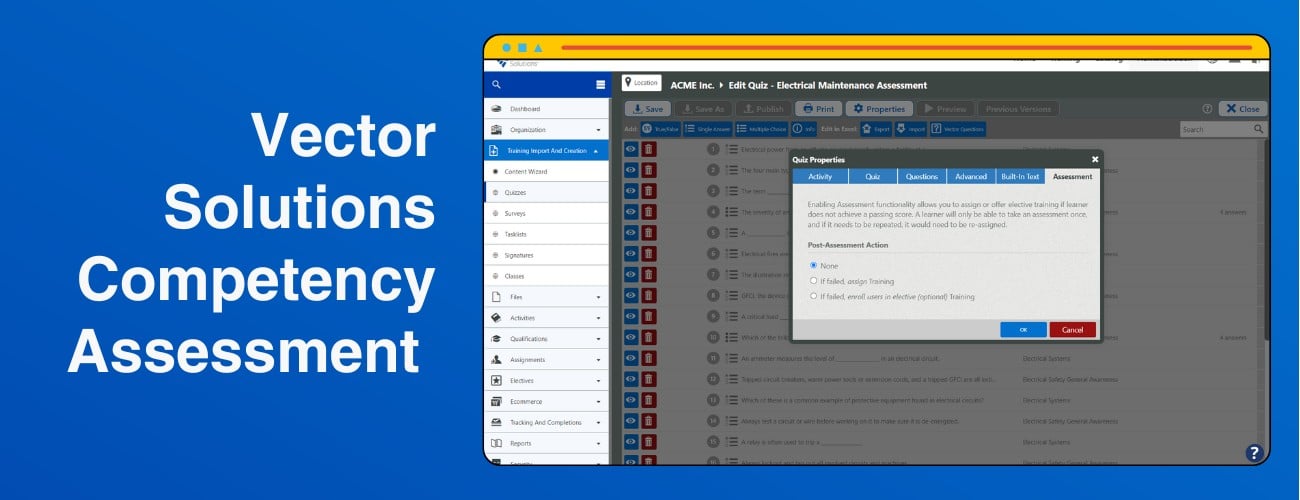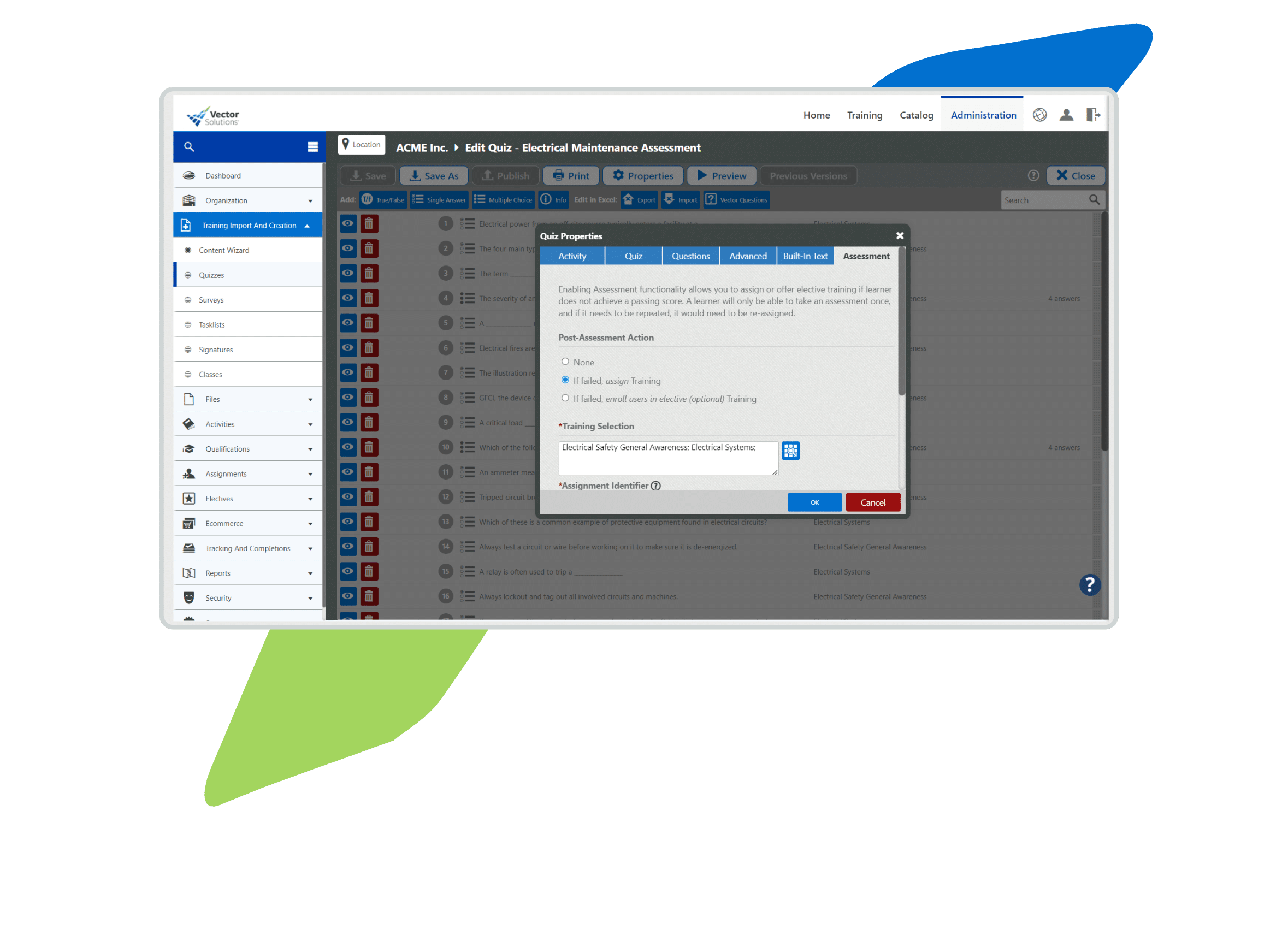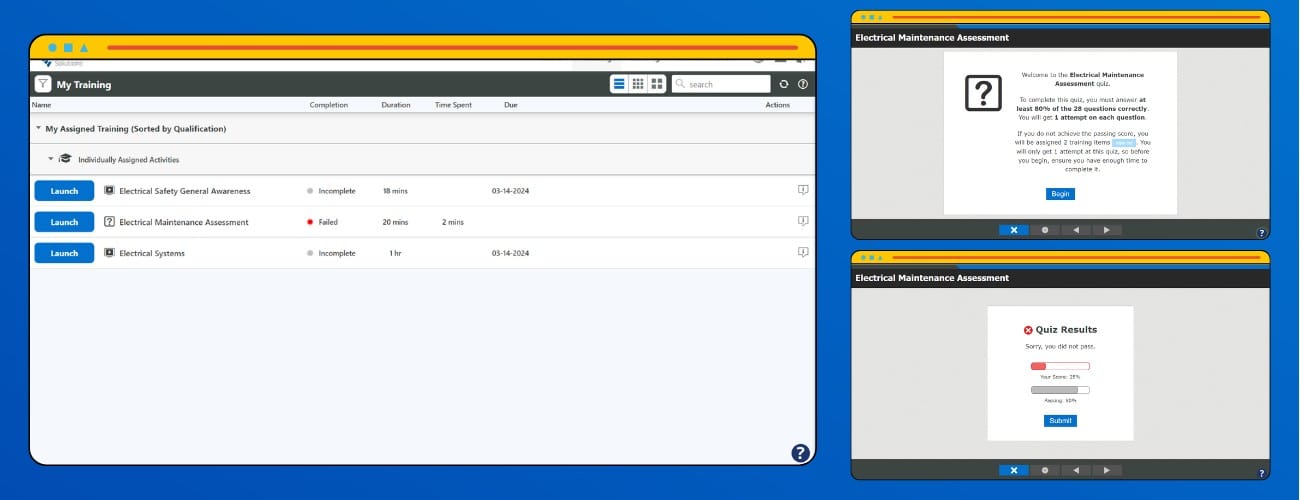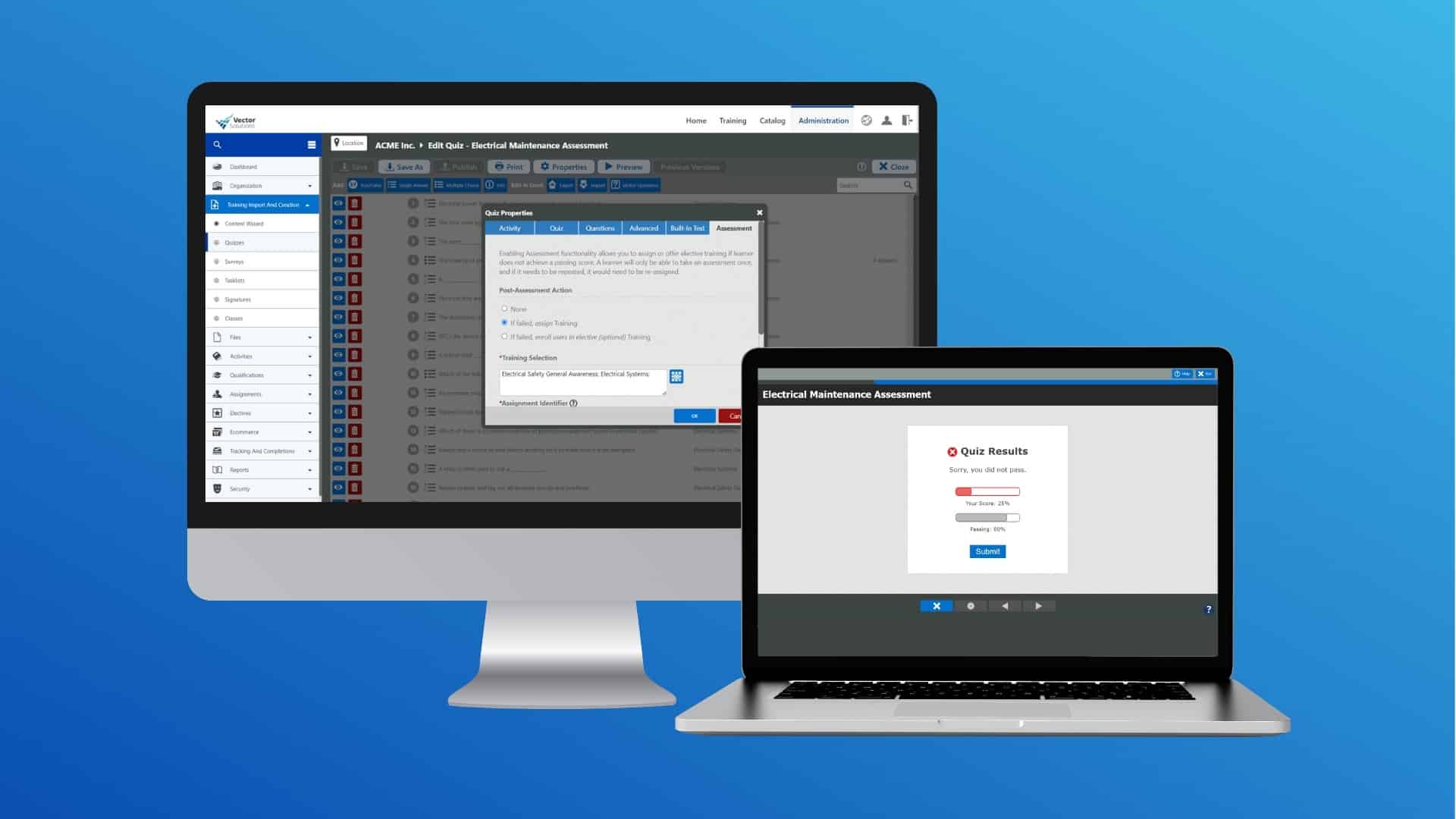March 5, 2024 6 min read

6 Employee Competency Assessment Best Practices
Industry:
Solution:

Organizations that strive for excellence must have a robust and agile way to assess the capabilities, knowledge, and skills of their diverse workforce. An effective employee competency assessment is a critical tool to help organizations pre-assess, evaluate, and continuously monitor their workforce. In this blog, we’ll uncover what a competency assessment is, the features to look for, and six tips to make the most of this powerful tool.
What is an Employee Competency Assessment?
An employee competency assessment is a foundational workforce evaluation tool. At Vector Solutions, our Competency Assessment tool is integrated within our Learning Management System (LMS). This tool allows companies to evaluate an individual’s knowledge specific to their job roles and responsibilities.
That information then helps organizations identify the strengths and weaknesses of their workforce, any skills gaps, and identify where additional training is required.
Here’s why this functionality is so important to modern workforce management:
- Strategic evaluation. At its essence, an Employee Competency Assessment strategically evaluates the proficiency of individuals within an organization. It goes beyond a one-time snapshot, offering a continuous monitoring mechanism to track employees’ growth and development over time.
- Informed decision-making. Using insights from competency assessments allows organizations to make informed decisions on training initiatives, skill development programs, and strategic workforce planning.
- Agile workforce development. The agility of an organization lies in its ability to adapt and grow. Competency assessments contribute to this by streamlining employee evaluations and follow-up actions for more targeted development efforts.
Key Takeaway: Employee Competency Assessments are not just about gauging current abilities but are integral to ongoing workforce development. This tool allows you to get the right training to the right employee at the right time—and do so more efficiently.

Types of Employee Competency Assessments
There are three main ways to use employee competency assessments: pre-screening new hires and pre- and post-training of existing employees.
- Evaluating job applicants. Many companies choose to use employee evaluations as part of their hiring process. One type of pre-screening evaluation is a competency exam. This helps organizations understand what baseline knowledge a job applicant already has, what they might need to be trained on, and whether they are a good fit for the role. Strategic use of competency assessments in the hiring process can save you time and money on hiring the right people. And it can help you curate a better onboarding training program for new hires.
- Pre-training assessments. Quizzing employees on a topic prior to assigning them training can be a huge time saver. In some cases, an employee might already have sufficient knowledge on a subject and can effectively “test out” of certain optional training. Or you might discover large gaps in knowledge, giving you an opportunity to revamp and modify your training program.
- Post-training assessments. Last, you can use these assessments to validate that your employees have learned what they were supposed to from their assigned training. If not, this allows you to assign additional training.
Want to learn more about how Vector Solutions’ Competency Tool can work for your business? Download our free product brochure below ⬇️
Competency Assessment Tool Product Brochure
Learn how Vector Solutions’ Competency Assessment tool can help you improve onboarding, retention, and hiring processes.
View Brochure
6 Competency Assessment Best Practices
So, how can you get the most out of your employee competency assessments? These six best practices can help ensure you strike the right cadence and align your assessments with business objectives.
1. Start with Goals in Mind
Always start by asking: why are we conducting this assessment? It’s important to understand what you hope to learn and have a plan for what you’ll do with the assessment results. Clearly define your goals ahead of time so you can be ready with a roadmap for next steps. This also helps ensure that your training goals are aligning with your broader company objectives.
2. Align with Organizational Values
Especially if you plan to conduct pre-hiring assessments, it’s important to align the goal of the assessment and the subject matter to your company values. This helps ensure that you aren’t just measuring knowledge competencies but that the employee will align with your operating principles.
3. Include Stakeholder Input
Involve key stakeholders, including managers, team leaders, and employees, in the competency assessment process. Their insights may provide a more comprehensive understanding of an individual’s performance and potential areas for growth.
Your employees can also share helpful insights on the broader training program—are courses and assessments assigned in a way that sets them up for success? Do they have sufficient time? Where do they need additional assistance?
Ask your employees what they think and modify your training program accordingly.
4. Conduct Regular Assessments
Remember that there are many ways to use competency assessments effectively. Conduct regular assessments throughout your training process to ensure the effectiveness of training at your organization.
Remember that employees forget as much as 70% of their training within 24 hours. So, it’s important to not just conduct assessments immediately after an employee completes training, but at various intervals after the fact.
5. Keep Assessments Succinct
Avoid overwhelming participants with lengthy assessments. Keep them focused and engaged by prioritizing key competencies. A concise assessment not only respects participants’ time but also enhances the accuracy of results.
We recommend including around 10 to 15 questions per assessment. Remember that most of your employees are deskless and lose productivity by being pulled out of work for longer periods of time. Asking fewer, but more impactful, questions ensures employees can complete assessments in a timely manner while still proving their knowledge.
6. Provide Constructive Feedback
Establish a feedback mechanism that accompanies competency assessments. Offer constructive feedback to individuals, highlighting not just areas of improvement but also acknowledging and reinforcing their strengths. This encourages a culture of continuous learning and development.

Why Choose Vector’s Employee Competency Assessments?
“It’s about what can we do to identify your gaps individually and then fill in those gaps so that you can be more effective in what you do. That’s not only a benefit to the plant, it’s a benefit to the individual.”
— Sr. Maintenance Manager
Our employee Competency Assessment tool can be added to our award-winning LMS and used to:
- Save time creating assessments, finding skills gaps, assigning training, and reporting on results.
- Improve assessments using Vector’s Question Bank—pre-built questions based directly on our eLearning courses.
- Customize training and assessments to fit your organization’s needs and goals.
- Improve insights and analysis by automating reporting and removing manual tracking processes.
Vector Solutions Competency Assessment
Create a stronger workforce training program using Vector Solutions’ Competency Assessment tool. Pre-assess knowledge and skills, automatically assign training to close gaps, and verify retention of critical information.
Learn More











